Updated on: December 17, 2025
Nestled between Central and Eastern Europe, Romania is a country where medieval towns, ancient legends, and pristine nature converge in breathtaking harmony. While it’s best known for the Dracula myth and its majestic castles, Romania offers far more than folklore. From fairytale villages and UNESCO sites to dramatic mountain roads and colorful seaside cities, this underrated gem is a dream for adventurous travelers and culture lovers alike.
In this guide, we unveil 12 of the most fascinating places in Romania that will capture your imagination and leave you wanting more. Whether you’re road-tripping through Transylvania or wandering through painted monasteries in Bucovina, these sites are unforgettable.

12. Hoia-Baciu Forest – Romania’s Paranormal Playground
Known as one of the most haunted forests in the world, Hoia-Baciu near Cluj-Napoca is a magnet for mystery seekers and paranormal enthusiasts. Nicknamed “Romania’s Bermuda Triangle,” this eerie woodland has been the subject of UFO sightings, strange lights, and electronic malfunctions for decades.
Despite its creepy reputation, the forest is also a beautiful natural area filled with twisted trees and strange clearings like the infamous Poiana Rotundă (The Clearing), where nothing seems to grow. Whether you believe in ghosts or not, Hoia-Baciu offers an atmospheric hike through a place where nature and folklore blur together.
Why visit:
- Ranked among the world’s most haunted places
- Intriguing blend of urban legend, science, and nature
- A great day trip from Cluj-Napoca
Travel Tips:
- Take a guided night tour for a spine-tingling experience.
- Stick to the trails — GPS and phone signals often act strange in the forest.

11. Sighișoara – The Fairytale Citadel of Transylvania
A visit to Sighișoara feels like walking into a storybook. This UNESCO World Heritage Site is one of the best-preserved medieval fortified towns in Europe. Located in the heart of Transylvania, Sighișoara is famous for its colorful houses, cobblestone streets, fortified towers, and most notably — being the birthplace of Vlad the Impaler, the inspiration behind Dracula.
The city’s centerpiece is the Clock Tower, a 64-meter-tall structure that offers panoramic views of the citadel. Don’t miss the Church on the Hill, which is accessed by a 176-step covered wooden staircase and offers incredible vistas and history. Every summer, Sighișoara hosts a Medieval Festival with music, crafts, and costumed reenactments that breathe new life into its ancient streets.
Why visit:
- Birthplace of Vlad the Impaler (aka Dracula)
- Stunningly preserved medieval architecture
- Vibrant local culture and seasonal festivals
Travel Tips:
- Stay overnight to experience the quiet, magical atmosphere after day-trippers leave.
- Try traditional dishes like ciorbă de burtă (tripe soup) or papanași (Romanian donuts).
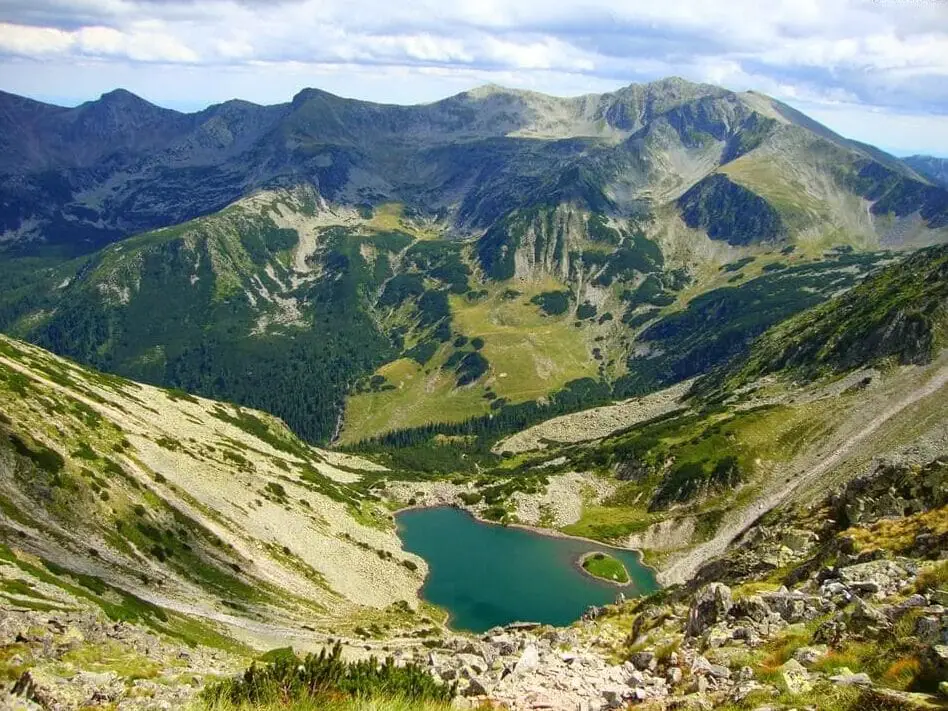
10. Retezat Mountains – Untouched Natural Beauty
If you’re looking for raw wilderness and alpine adventure, head to the Retezat Mountains, part of Romania’s Southern Carpathians. This region is home to Retezat National Park, the country’s first and most biodiverse park, offering over 100 glacial lakes, towering peaks, and an abundance of wildlife, including chamois, lynx, and even bears.
Popular hikes include trails to Lake Bucura, Romania’s largest glacial lake, and Peleaga Peak (2,509 m), which offers stunning panoramas over rugged ridgelines. The park is well-marked but remote, making it ideal for those seeking off-the-beaten-path adventure and solitude in nature.
Why visit:
- One of the wildest, most pristine parts of Romania
- Excellent for experienced hikers and nature photographers
- Rich biodiversity and peaceful alpine scenery
Travel Tips:
- Carry supplies — there are few services inside the park.
- Best visited between June and September when trails are most accessible.
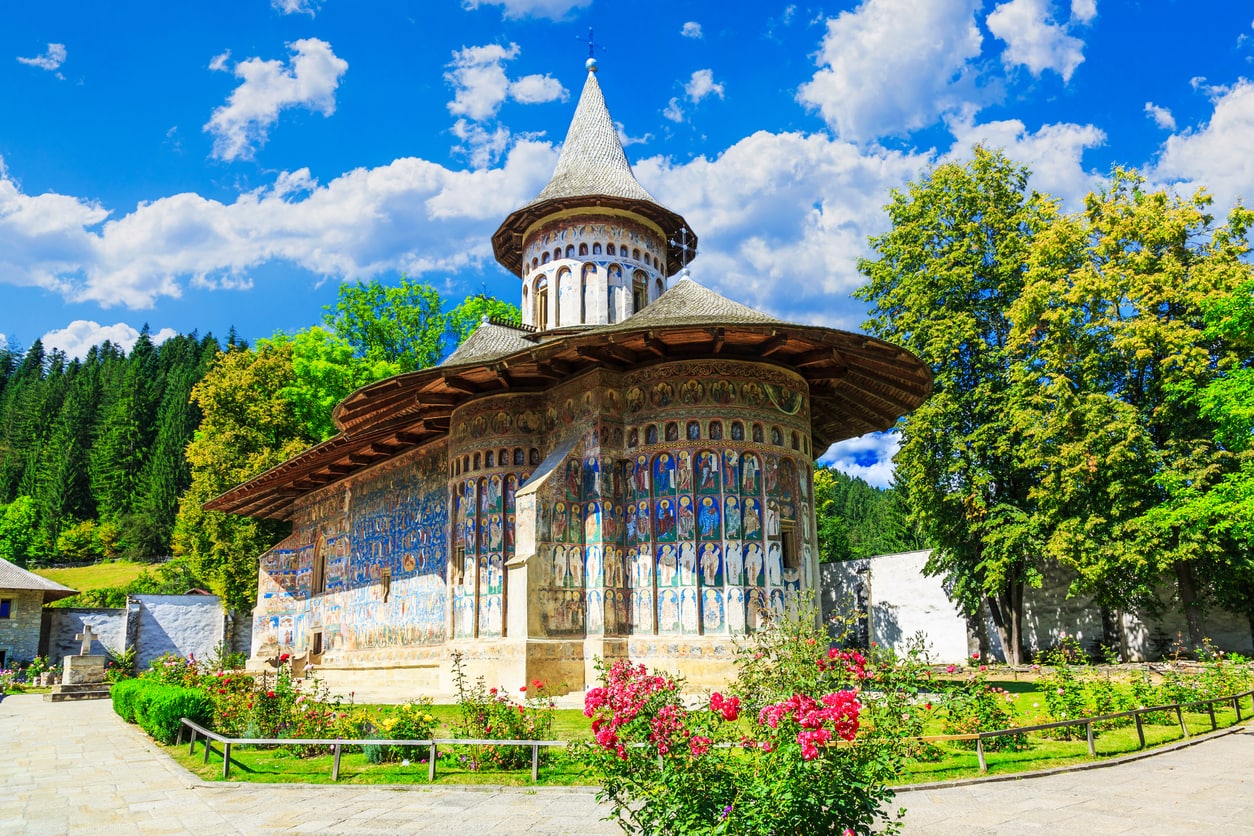
9. Painted Monasteries of Bucovina – Romania’s Spiritual Masterpieces
Tucked into the rolling hills of northeastern Romania, the Painted Monasteries of Bucovina are architectural treasures and spiritual landmarks unlike anything else in the world. Built in the 15th and 16th centuries, these monasteries are famed for their exterior frescoes that remain vivid despite centuries of harsh weather.
The most famous is Voroneț Monastery, often called “the Sistine Chapel of the East,” known for its striking blue color and intricate scenes of the Last Judgment. Others, like Sucevița, Moldovița, and Humor, also feature vibrant biblical narratives that cover their entire facades. These monasteries are UNESCO World Heritage Sites and reflect Romania’s Orthodox Christian heritage.
Why visit:
- Unique religious art that covers the outside of buildings
- Peaceful countryside setting and deep cultural significance
- UNESCO-recognized masterpieces of Moldavian architecture
Travel Tips:
- Dress modestly and speak quietly out of respect for worshippers.
- Hire a local guide to explain the symbolism in the frescoes,
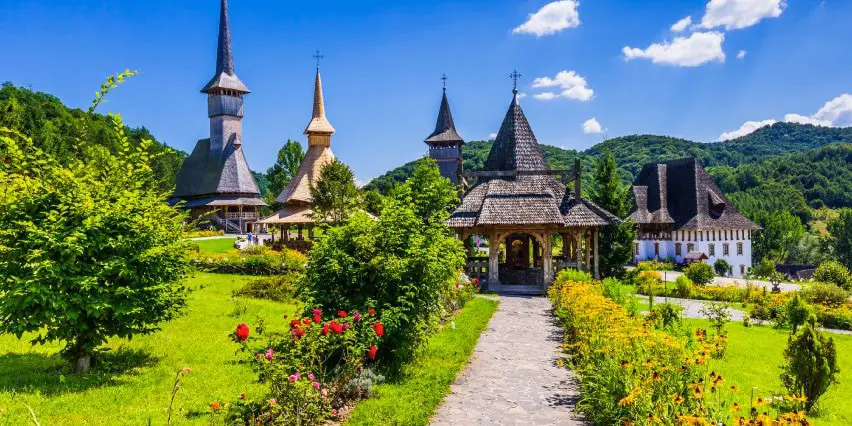
8. Maramureș – A Living Museum of Romanian Traditions
Step into a time capsule of rural life in Maramureș, one of Romania’s most culturally rich and well-preserved regions. Located in the far north, Maramureș is renowned for its wooden architecture, ornate carved gates, and strong ties to centuries-old traditions that still thrive today.
The region is dotted with UNESCO-listed wooden churches, such as those in Bârsana and Ieud, built without nails and decorated with colorful murals. Villages like Breb and Botiza offer an authentic glimpse into traditional life, where locals still wear handmade clothing and speak dialects untouched by time. A standout attraction is the Merry Cemetery in Săpânța, where vividly painted tombstones feature humorous or poetic epitaphs.
Why visit:
- Explore folk culture, handcrafts, and wooden architecture
- Visit working farms, local festivals, and open-air markets
- A peaceful retreat into a slower, more traditional way of life
Travel Tips:
- Stay in a local guesthouse (pensiune) for the full experience.
- Try horinca, a strong homemade plum brandy often offered to guests.
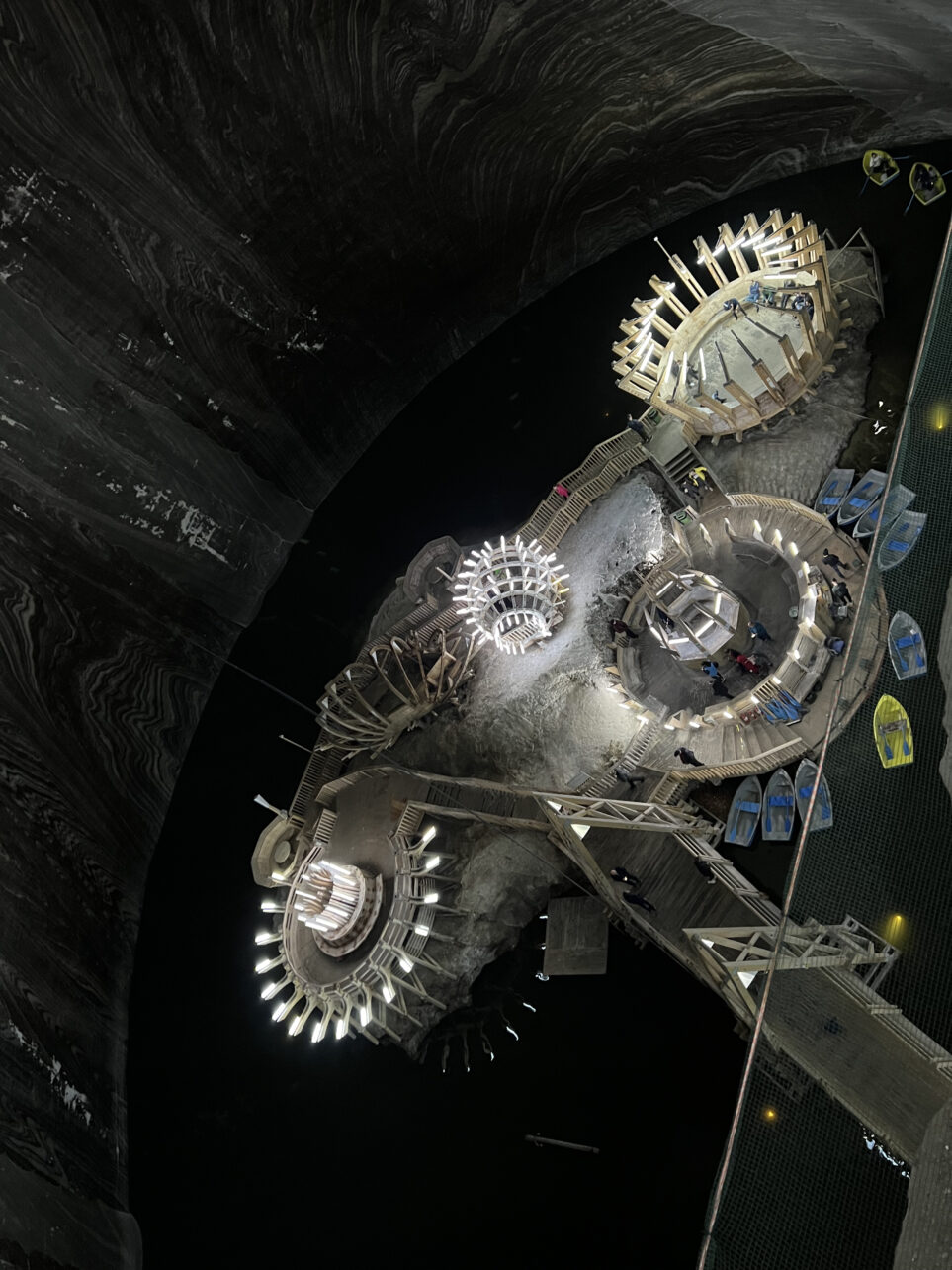
7. Salina Turda – The Subterranean Salt Mine Amusement Park
Few places in the world are as unexpectedly impressive as Salina Turda, a former salt mine turned underground theme park in Transylvania. First excavated in antiquity and used until the early 20th century, this massive complex has been transformed into a surreal tourist attraction that’s both educational and fun.
Descending into the mine, you’ll find colossal chambers with chandeliers made of salt, a subterranean lake with rowboats, and even a mini amusement park featuring a Ferris wheel, bowling alley, and amphitheater. The air inside is rich in salt ions, believed to have therapeutic benefits for respiratory issues.
Why visit:
- One of the most unique underground attractions in the world
- Combines history, wellness, and family-friendly fun
- Stunning lighting and sci-fi-like atmosphere
Travel Tips:
- Temperatures stay around 10°C (50°F), so bring a jacket.
- Buy tickets online during high season to avoid queues.
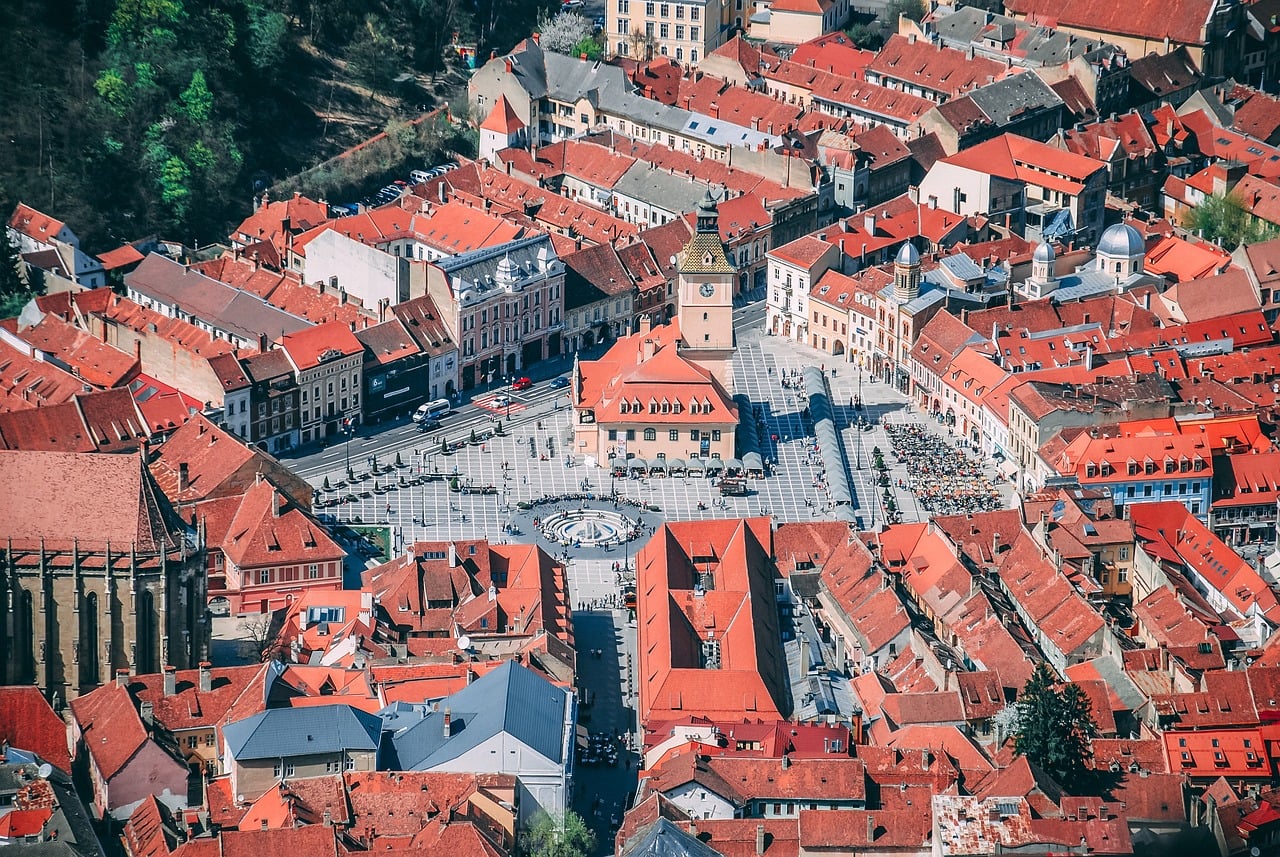
6. Brașov – Transylvania’s Gateway to the Mountains
Brașov is a captivating medieval city nestled in the Carpathian Mountains, known for its charming Old Town, fortified walls, and the iconic Black Church, the largest Gothic church in Southeast Europe. With its mix of German, Hungarian, and Romanian influences, the city feels like stepping back into a fairy tale.
At the heart of Brașov lies Piața Sfatului (Council Square), lined with colorful baroque buildings and cozy cafes. Explore narrow streets like Strada Sforii (Rope Street), one of the narrowest alleys in Europe, or take the cable car up Tâmpa Mountain for panoramic city views.
Brașov is also a convenient base for exploring surrounding attractions like Poiana Brașov (a top ski resort), Râșnov Fortress, and Bran Castle.
Why visit:
- Stunning medieval architecture and walkable streets
- Ideal base for exploring Transylvania’s castles and mountains
- Excellent mix of history, shopping, and outdoor adventure
Travel Tips:
- Visit in December for the charming Christmas Market.
- Climb the White Tower or Black Tower for photo-worthy cityscapes.
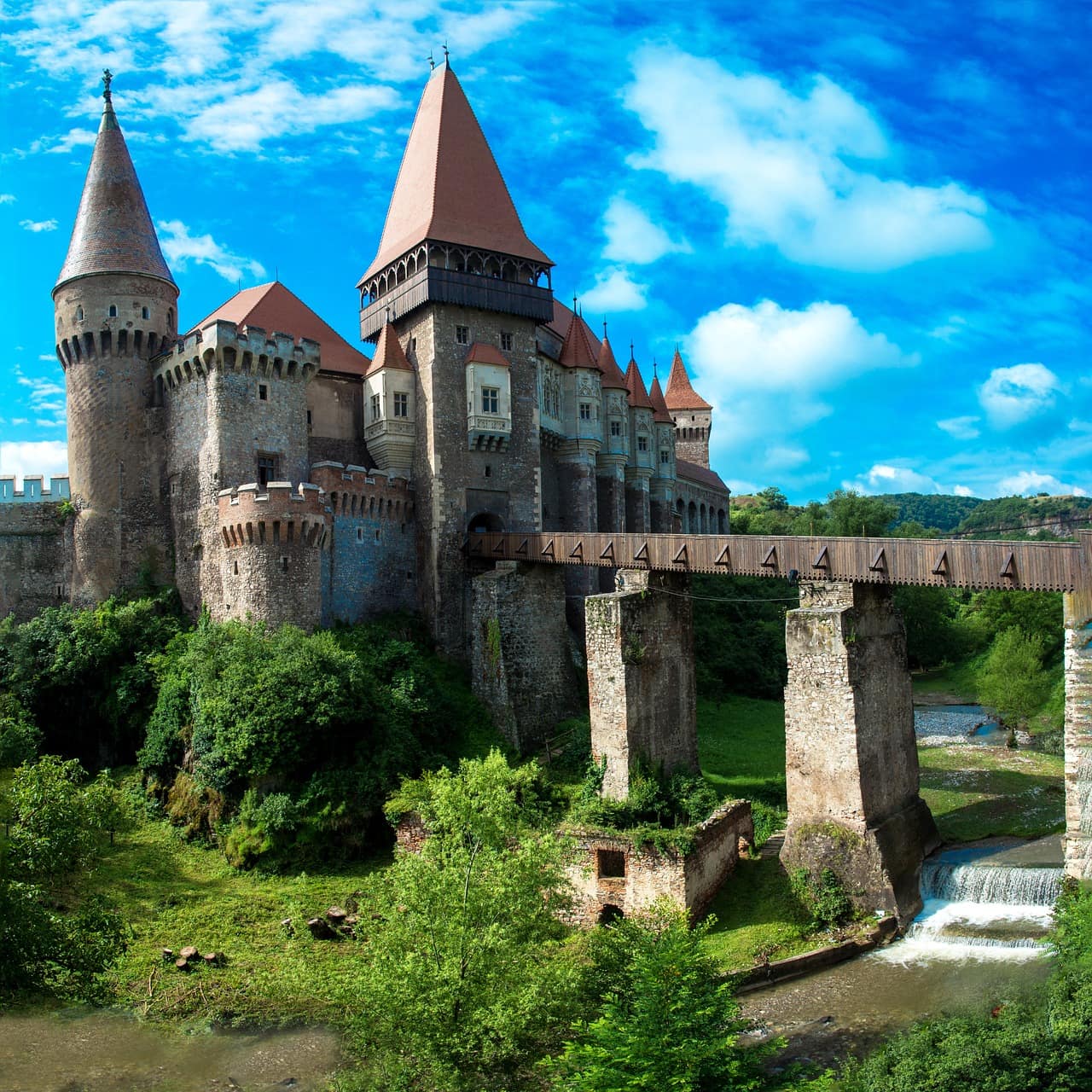
5. Corvin Castle – The Gothic Jewel of Hunedoara
Corvin Castle (also known as Hunyadi Castle) is one of Europe’s largest and most breathtaking Gothic-style fortresses. With its looming towers, arched stone bridge, and red-tiled turrets, it looks like something straight out of a fantasy film. Built in the 15th century by John Hunyadi, a leading military figure, the castle served both as a stronghold and a noble residence.
Legend has it that Vlad the Impaler was imprisoned in Corvin Castle, though historical proof is limited. Inside, you’ll find rooms filled with medieval weapons, armor, and secret passageways that hint at the castle’s turbulent past. Its courtyard and the Knights’ Hall are especially atmospheric and frequently used in movie productions.
Why visit:
- One of the most picturesque castles in all of Europe
- Strong ties to Romanian legends and medieval history
- Unique architecture blending Renaissance, Gothic, and Baroque elements
Travel Tips:
- Plan your visit during the Hunedoara Medieval Festival in summer for costumed reenactments.
- Check out the Bear Pit, where wild animals were once kept for entertainment.
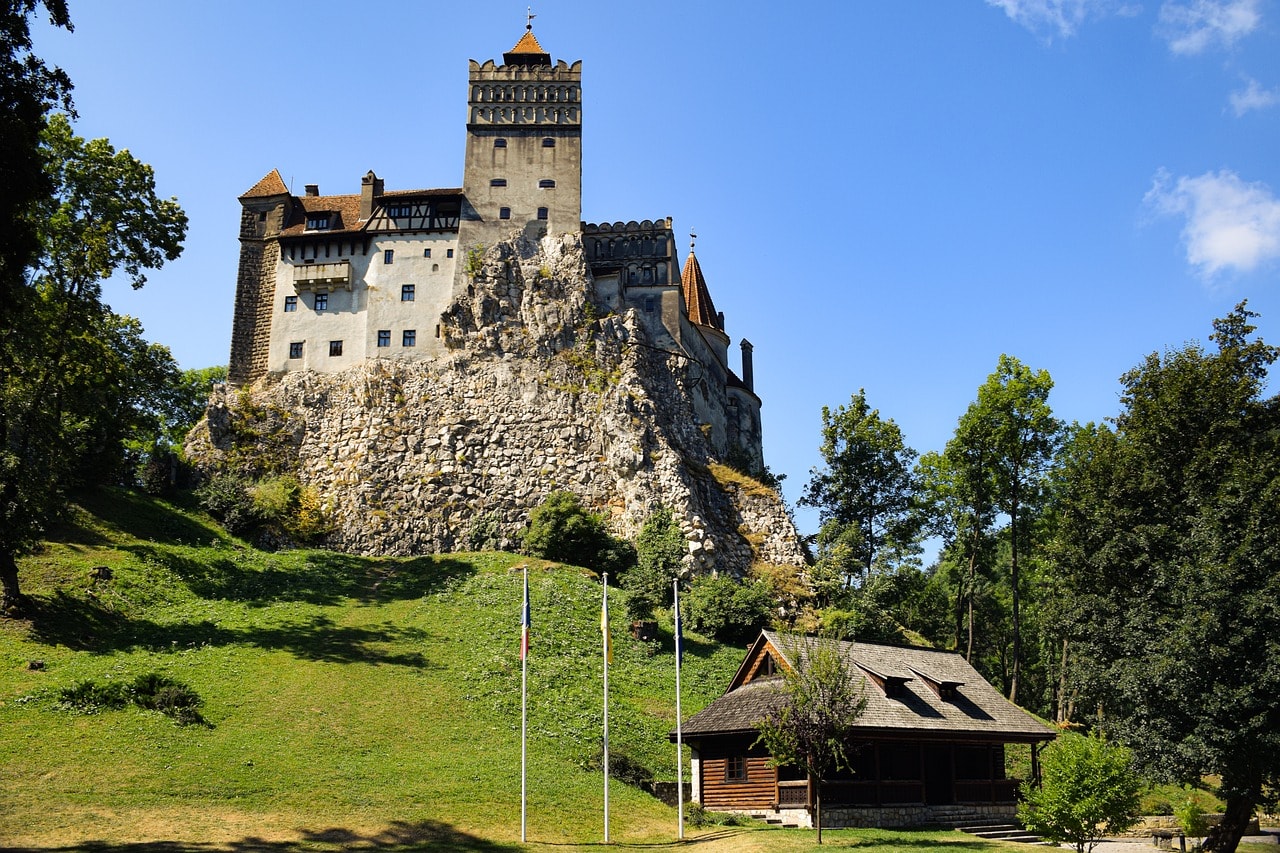
4. Bran Castle – Romania’s Most Infamous Fortress
Often dubbed “Dracula’s Castle,” Bran Castle is one of the most visited landmarks in Romania, thanks to its Gothic architecture and legendary association with Bram Stoker’s vampire novel. While there’s no solid proof that Vlad the Impaler ever lived here, the castle’s eerie towers, hidden staircases, and medieval armory certainly fuel the myth.
Perched atop a rocky cliff at the edge of Transylvania, Bran Castle was originally built in the 14th century to defend against invading forces. Later, it became a royal residence for Queen Marie of Romania, who added touches of elegance that softened its military past. Inside, you’ll find museum-style exhibits showcasing furniture, weaponry, royal portraits, and folklore artifacts.
Why visit:
- Legendary ties to Dracula and Vlad the Impaler
- Beautiful panoramic views of the surrounding valley
- A mix of eerie medieval halls and elegant royal rooms
Travel Tips:
- Arrive early to beat the crowds, it gets very busy midday.
- Combine your visit with a stop in the nearby village of Moieciu or Râșnov Fortress.
- Visit during Halloween for an awesome haunted castle experience.
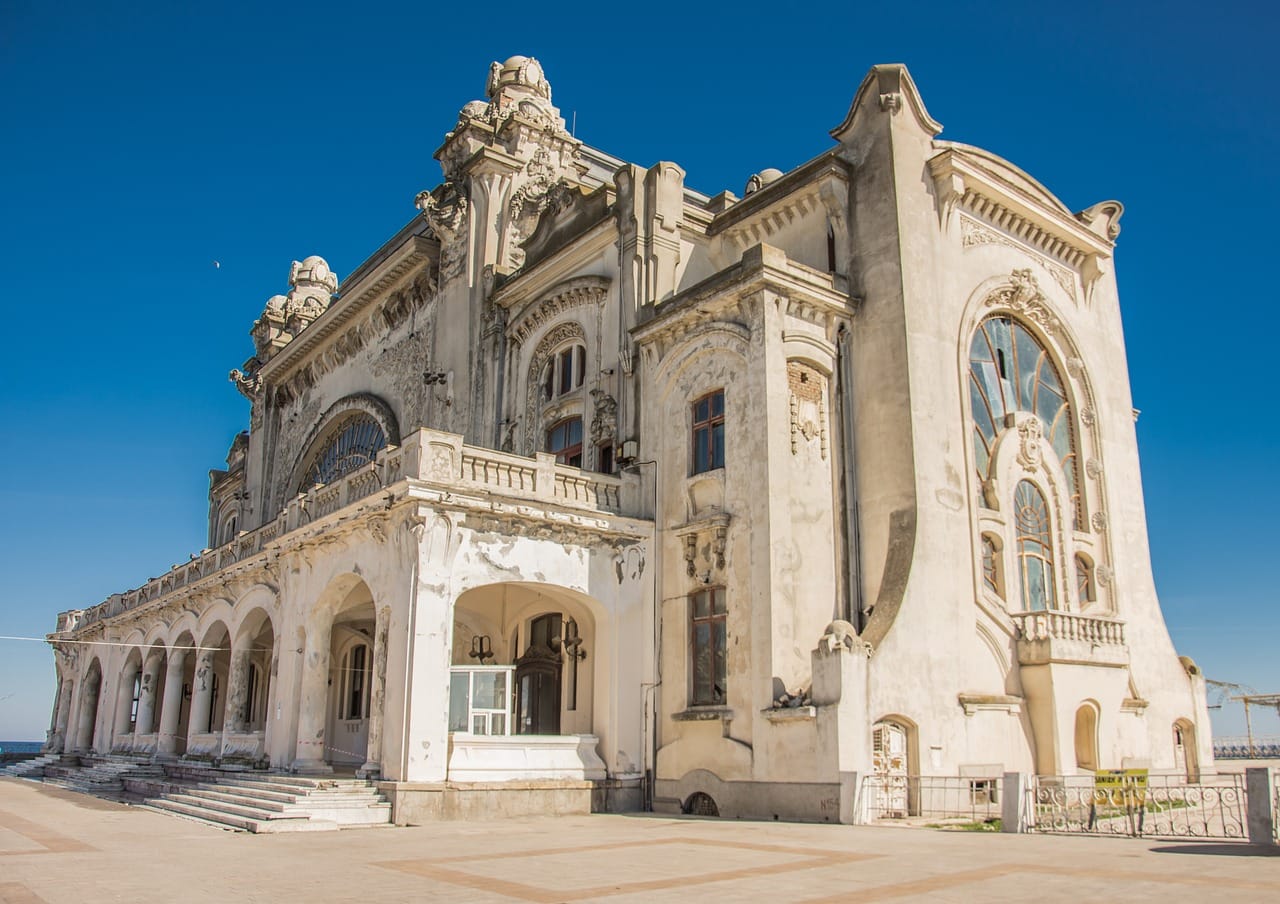
3. Constanța – Ancient Port Meets Modern Beach Life
Located on the shores of the Black Sea, Constanța is Romania’s oldest city, founded by the Greeks over 2,500 years ago. Today, it blends ancient ruins, Ottoman influences, and seaside relaxation into one vibrant coastal experience.
A must-see is the Constanța Casino, a hauntingly beautiful Art Nouveau structure that sits right by the water. Although it’s currently under renovation, its silhouette remains a powerful symbol of the city’s grandeur. The Roman Mosaic Edifice, Ovid Square, and Great Mahmudiye Mosque reveal the city’s rich multicultural past.
Nearby, the Mamaia resort strip offers sandy beaches, lively nightlife, and modern hotels. Whether you’re here for history or sunbathing, Constanța delivers.
Why visit:
- The most culturally diverse city in Romania
- Access to both heritage and vibrant beach life
- Close proximity to seaside resorts like Mamaia and Vama Veche
Travel Tips:
- Take a walking tour through the Old Town to uncover hidden gems.
- Enjoy seafood with a sea view along the Tomis Marina promenade.
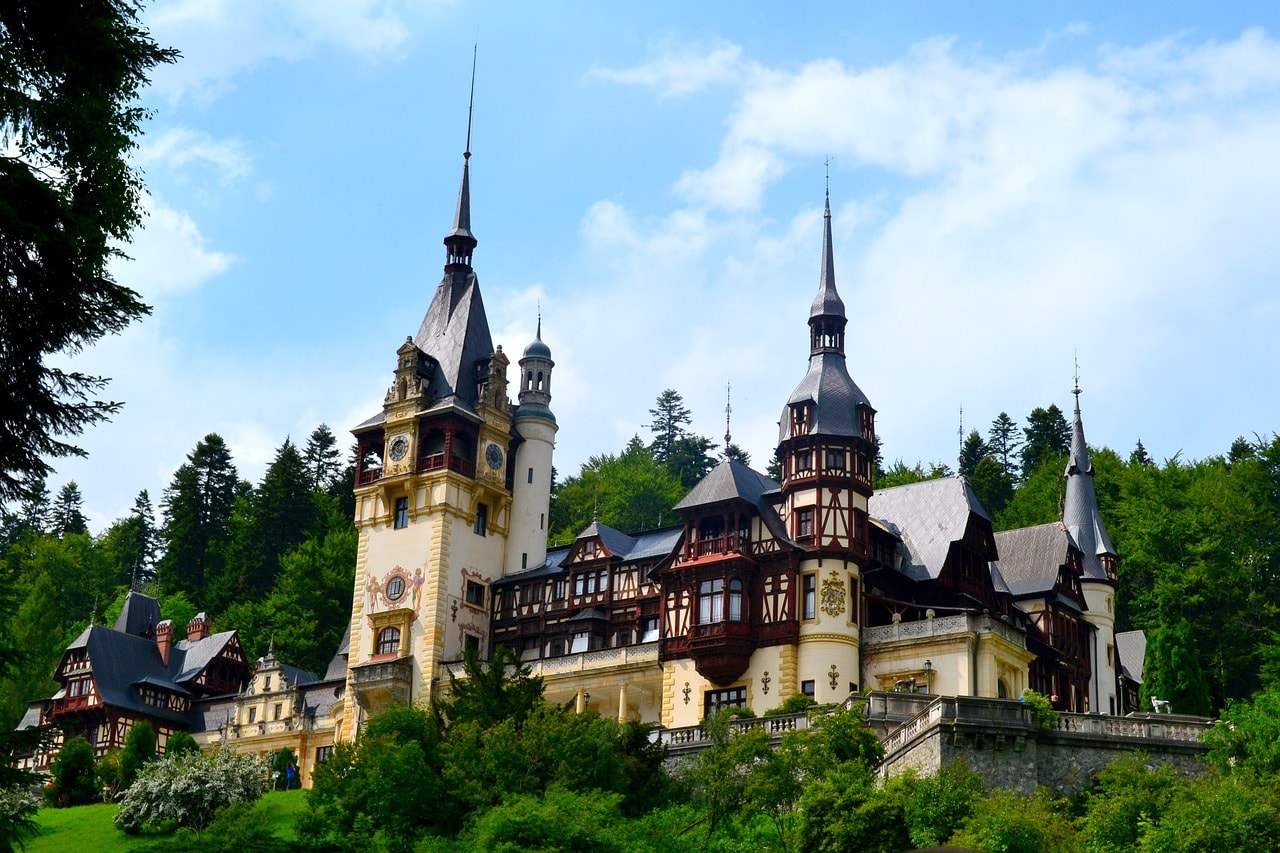
2. Sinaia – Mountain Royalty in the Heart of Romania
Nicknamed “The Pearl of the Carpathians,” Sinaia is a mountain resort town where regal elegance meets natural beauty. The town’s crown jewel is Peleș Castle, a Neo-Renaissance masterpiece commissioned by Romania’s first king, Carol I. This fairy-tale structure looks like something out of a Disney movie—with turrets, stained glass, wood carvings, and lush gardens.
Sinaia isn’t just about castles, though. You can also hike or take a cable car into the Bucegi Mountains, which offer year-round adventures, from alpine skiing in winter to scenic trekking in summer. The Sinaia Monastery, dating back to 1695, adds a spiritual touch to the town’s charm.
Why visit:
- Home to Romania’s most beautiful royal castle
- Excellent ski slopes and hiking trails
- Elegant old-world charm with modern amenities
Travel Tips:
- Tour both Peleș and neighboring Pelișor Castle for a complete experience.
- Visit in autumn for incredible foliage and fewer tourists.

1. Transfăgărășan Highway – The Best Drive in the World
The Transfăgărășan Highway, often called the world’s most spectacular road, slices through Romania’s rugged Făgăraș Mountains with winding switchbacks, dramatic tunnels, and unforgettable alpine views. Built in the 1970s under the orders of Nicolae Ceaușescu as a strategic military route, the highway stretches 90 kilometers and reaches altitudes over 2,000 meters, offering stunning perspectives of valleys, lakes, and cliffs.
The highlight of the route is Bâlea Lake, a glacial lake at the top where you’ll find a chalet and even an ice hotel in winter. Driving this route is not just a thrill—it’s an immersive experience into Romania’s untouched wilderness. The road is typically open from June to October, weather permitting.
Why visit:
- One of the highest and most scenic roads in Europe
- Featured on Top Gear as “the best driving road in the world”
- Home to tunnels, waterfalls, and panoramic viewpoints
Travel Tips:
- Go early to avoid traffic and tour buses.
- Combine it with a stop at Poenari Fortress, Vlad the Impaler’s actual citadel.
Romania is far more than the land of Dracula, it’s a diverse, captivating country where ancient traditions meet dramatic landscapes and storybook towns. Whether you’re winding through the Transfăgărășan Highway, admiring colorful frescoes in Bucovina, or soaking in medieval charm in Brașov and Sighișoara, Romania offers an experience as rich as it is underrated.
What truly sets Romania apart is its ability to feel both wild and welcoming, a destination where you can hike untouched mountains in the morning and explore Gothic castles by afternoon.
Planning a trip to Eastern Europe? Don’t overlook Romania, it might just become your favorite stop.
You Might Also Like:
If you enjoyed this post on 12 Most Fascinating Places In Romania, you might also like: Croatias Hidden Treasures A Guide To The Most Amazing Places, Traveling To Hidden Destinations, How To Experience The Worlds Best Food Destinations.
